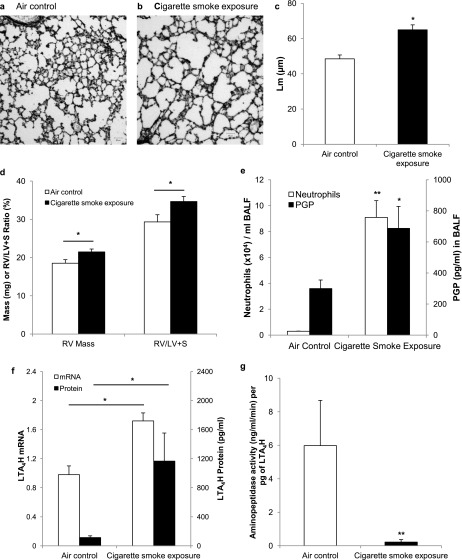Figure 1.
A/J mice exposed to once-daily whole-body cigarette smoke for 22 weeks develop an emphysematous phenotype and alterations to the leukotriene A4 hydrolase (LTA4H)–proline-glycine-proline (PGP) pathway. Representative hematoxilin and eosin stain of air control (n = 11) (a) and cigarette smoke–exposed (n = 6) (b) mouse and resultant increase in mean linear intercept (Lm) (c) in the lungs of cigarette smoke–exposed mice, and development of right ventricular (RV) hypertrophy measured by increased RV mass and increased RV/LV ratio as seen in d. Neutrophil burden and PGP amounts are increased in bronchoalveolar lavage fluid (BALF) of cigarette smoke–exposed mice as seen in e. Additionally, LTA4H mRNA amounts are increased as is the amount of enzyme detected by ELISA, depicted in f. Despite these increases in enzyme amount, the aminopeptidase function is inactivated by more than 95% in cigarette smoke–exposed mice as seen in g, preventing the degradation of PGP in cigarette smoke–exposed mice. *P < 0.05, **P < 0.01 by two-sided t test, with error bars representing SEM.

